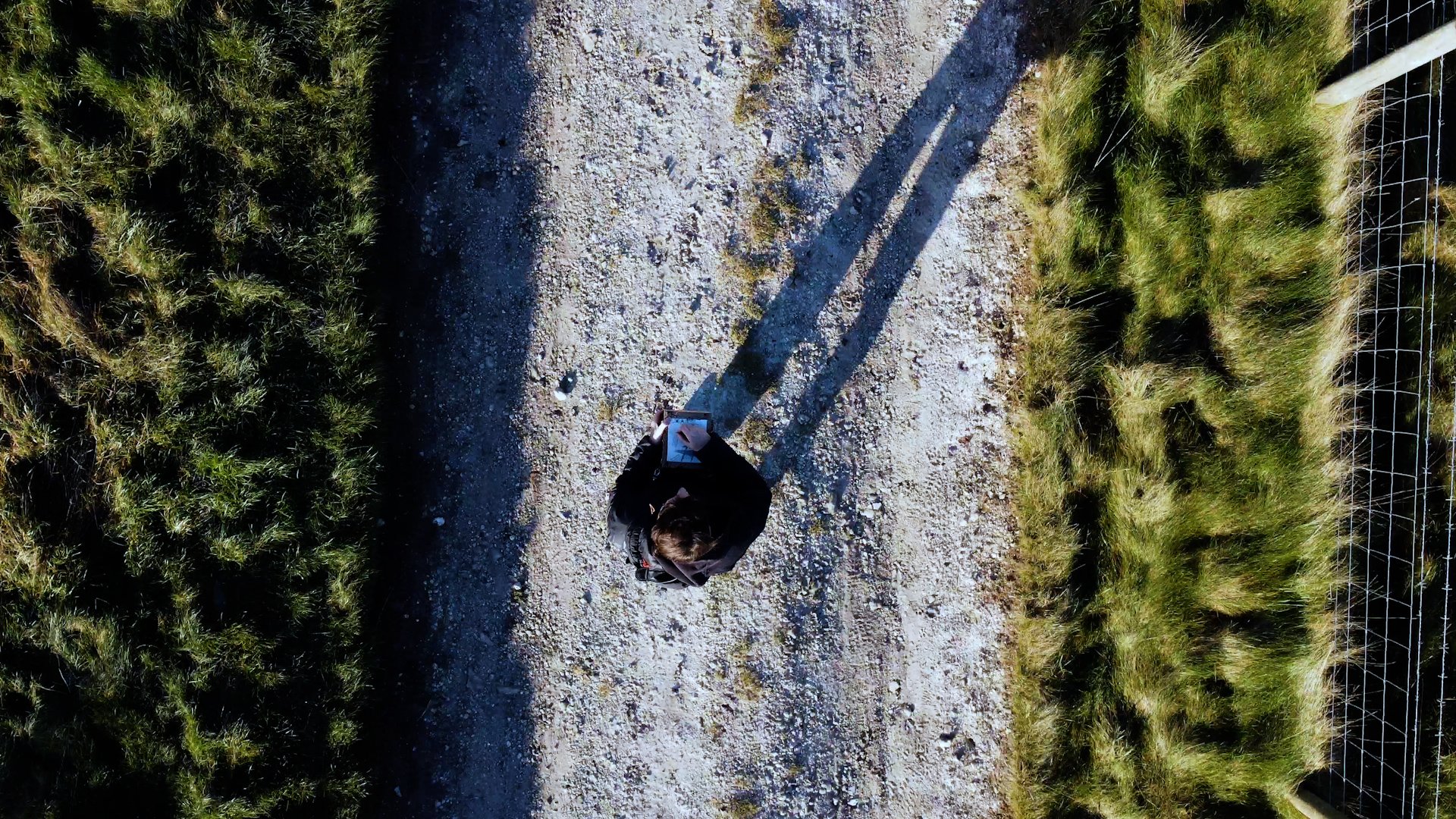THE RIDGEWAY
The oldest road in Britain weaves through the south of England like a sentence written by many hands. The Ridgeway is the site of rituals and ramblings, protests and parties. It has stories spanning 5000 years etched into its chalk surface. To some it is a place to escape to, and for others it is their home. The 87 mile trail is punctuated with fences and forests, standing stones and stiles, borders and boundaries. Each of these marks shape the landscape's grammar; its ownership and access, freedom, and restriction.
My work investigates how drawing methodologies can be used to reflect these many voices layered within the landscape. I designed a scroll box to document visual experiments while walking The Ridgeway. The portable box contains a vertical 87 metre scroll of paper. On this surface I could generate marks through gathering materials local to the landscape. Rubbings of an ancient stone, ink from a blackberry bush, A plant pressing from a freehold border. Chalk from under my feet. The drawings can either be viewed as fragments like a film negative, or unravelled like a winding path, stretching out into the future and back into the past.
A process image showing the layering of different stories on the trail. A footprint, a bicycle tire, farm machinery.
Bark pressings of tree trunks planted along an agricultural border alongside the National Trail.
Tree stump rubbings from a shelterbelt surrounding the ancient prehistoric burial site, Wayland’s Smithy.
Like film negative, the drawings could either be viewed in isolation, or unravelled as part of a larger whole. Drawing in this way allowed me to start highlighting the rhythms of the trail. The pattern of my walking, the bouncing of the box on my knee, the snippets of conversation and aching feet are all captured on the box.
Extract of the Scroll Box made along The Ridgeway on White Horse Hill, near Uffington.









